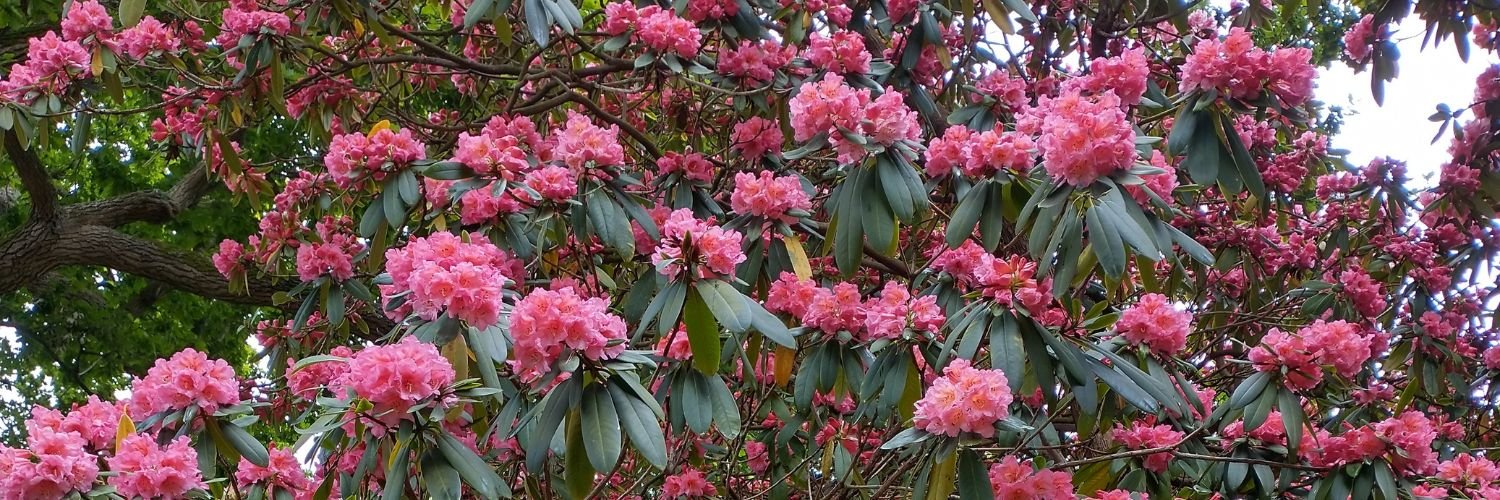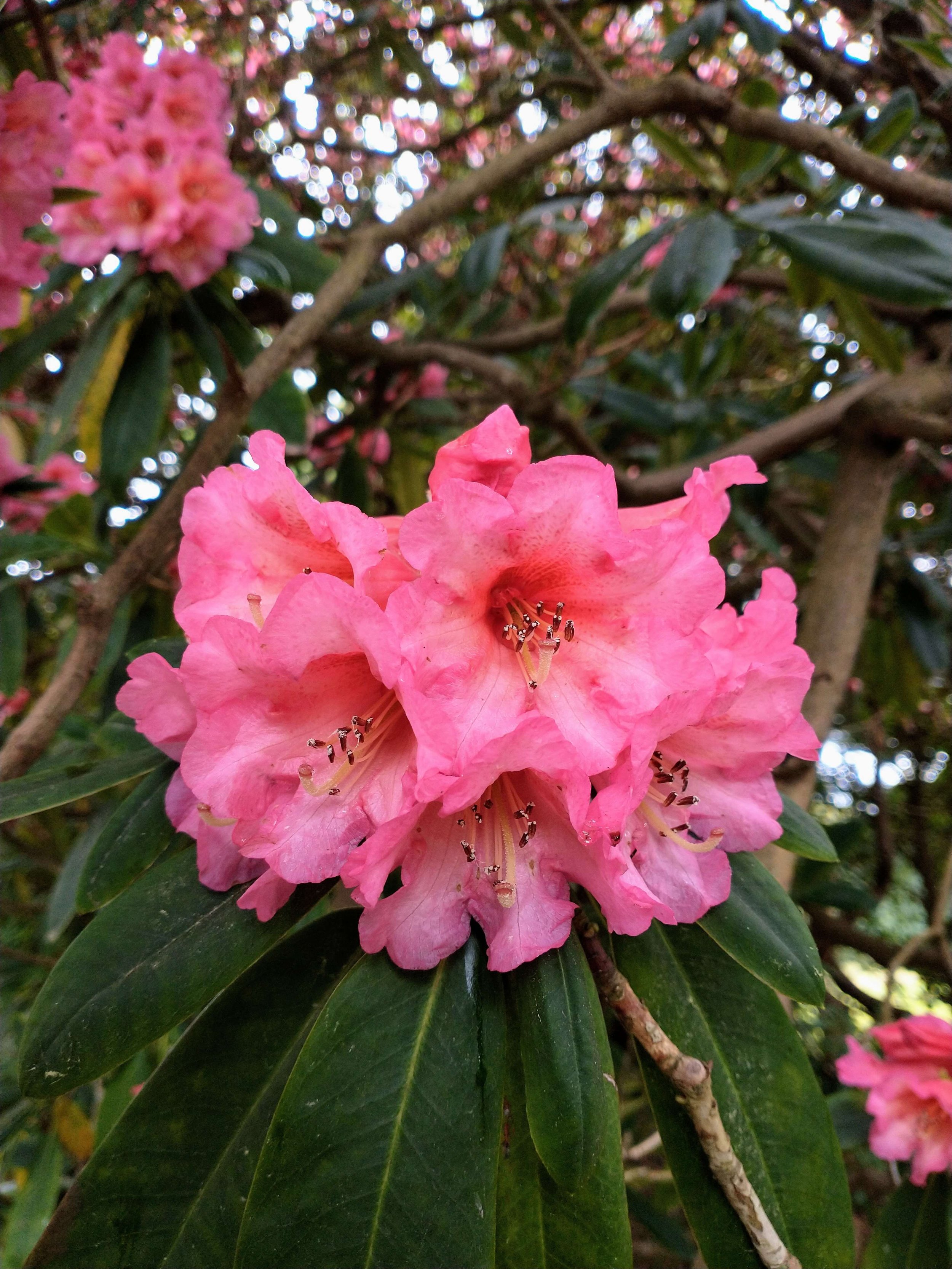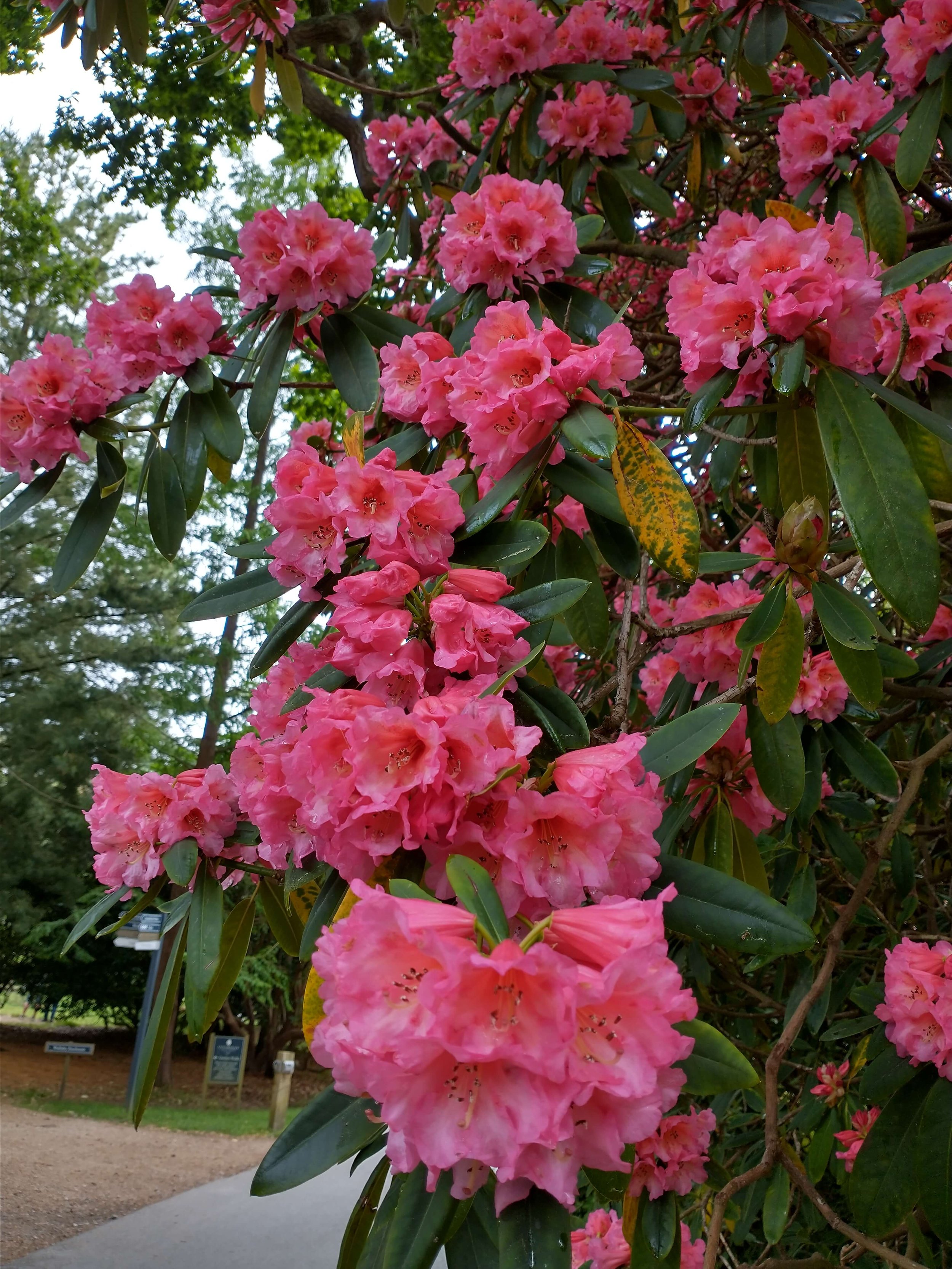Rhododendron ’Leonardslee Shot Silk’
We have recently received a Certificate of Internal Registration from RHS to certify that our application to officially register our ‘Rhododendron Leonardslee Shot Silk’ has been officially accepted.
This beautiful plant was hybridised by Sir Edmund Loder here at Leonardslee, with the resulting hybrid plants becoming a favourite of his. He planted many of them across the estate, calling this hybrid ‘Shot Silk’ because the flowers have a mix of two colours, just like the fabric namesake.
Up until now (and to our best knowledge), this plant has been unknown outside of Leonardslee. By registering this plant with the RHS, it now officially ‘exists’ and there is now a record of it.
This makes it less likely for the ‘Shot Silk’ to be lost to cultivation and enables us to continue to conserve and propagate it, ensuring that this rare and special Rhododendron remains at Leonardslee for future generations.
About the Rhododendron ‘Leonardslee Shot Silk’
A hybrid between the pale-pink-and-white flowered Rhododendron fortunei subsp. discolor and the blood-red flowered Rhododendron facetum.
It is a large tree-like Rhododendron, reaching around 8 metres tall, with reddish brown smooth bark.
Flowers in June, producing abundant large globular trusses of bell-shaped flowers that have a satin sheen and show a mix of two colours – coral-pink and fawn-orange, with speckling inside.
It was hybridised by Sir Edmund Loder (date unknown) here at Leonardslee, the resulting hybrid plants were a favourite of his and he planted many of them across the estate – he called the hybrid ‘Shot Silk’ because the flowers have a mix of two colours, just like the fabric namesake.
The name had never been officially registered with the RHS and the plant was never to our knowledge sold in a nursery, so the plant is unknown outside of Leonardslee.
By registering this plant, it now officially ‘exists’ and there is a record of it, making it less likely to be lost to cultivation and enabling us to conserve and propagate it to ensure that this rare and special plant remains at Leonardslee for the future.
If people want to see the plant when it flowers in June, there are individuals across the gardens, but the most accessible is a group of tree-sized plants near the wallaby enclosure, just next to the veteran Cedar of Lebanon.





